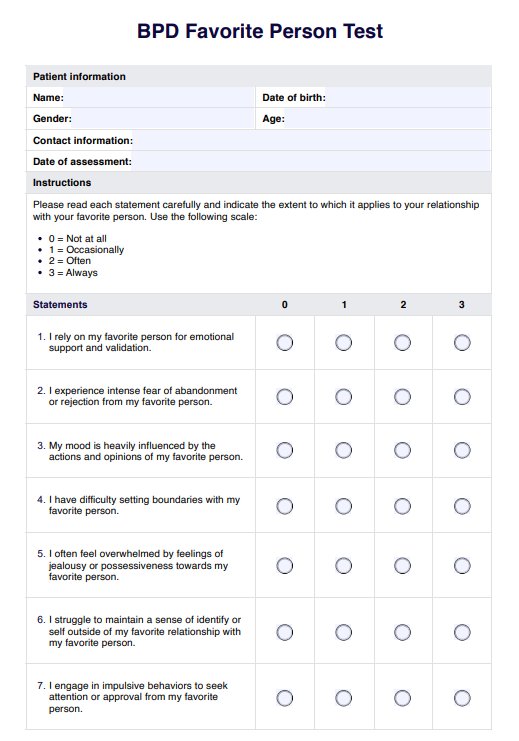Losing their favorite person can trigger intense emotional distress, including feelings of abandonment, emptiness, and despair. They may experience heightened mood swings, impulsivity, and a sense of identity disturbance.

BPD Favorite Person Test
Discover how the BPD Favorite Person Test helps mental health professionals assess emotional dependency and guide treatment for borderline personality disorder.
Use Template
BPD Favorite Person Test Template
Commonly asked questions
BPD symptoms typically peak in early adulthood, with most individuals experiencing the highest intensity of symptoms in their late teens to early twenties.
The notion of a life expectancy of 27 for individuals with BPD is a myth. While BPD can impact the quality of life and increase risk factors for certain health conditions, there is no specific life expectancy associated with the disorder.
EHR and practice management software
Get started for free
*No credit card required
Free
$0/usd
Unlimited clients
Telehealth
1GB of storage
Client portal text
Automated billing and online payments











